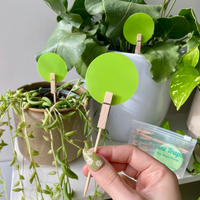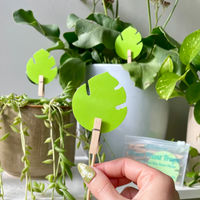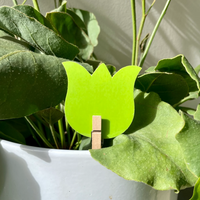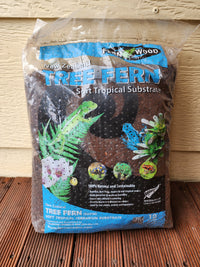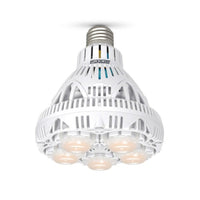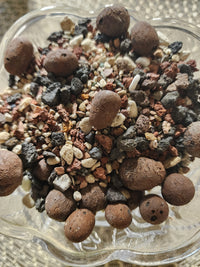Choosing the right LED grow lights for your indoor greenery here in Australia can truly transform dim corners into thriving plant havens. In this guide, you’ll discover what makes LED lighting so essential, how to select the ideal wattage, spectrum, and coverage, which fixtures are perfect for everything from seedlings to flowering plants, best practices for setup and maintenance, and even a peek at the top brands we stock at Leaf of Faith. Whether you're a budding hobbyist or a seasoned cultivator, this resource is packed with actionable insights to help you get the most out of your indoor plants with LED grow lights.
What Are LED Grow Lights and Why Are They Essential for Indoor Plants in Australia?
LED grow lights are essentially smart lamps designed to emit specific wavelengths of light that plants absolutely love for photosynthesis. This means you can ensure consistent, healthy growth even in spaces where natural sunlight is a bit scarce. By fine-tuning their output to the crucial red and blue bands, LEDs mimic solar energy incredibly efficiently, all while using less energy and creating less heat stress for your precious indoor plants.
LED Grow Lights and Photosynthesis
LED grow lights are specifically engineered to emit those vital wavelengths of light, particularly red and blue, which are the powerhouses behind photosynthesis. These wavelengths are readily absorbed by chlorophyll, giving your plants a real boost in growth and development. This targeted approach means less energy is wasted and your plants experience minimal heat stress compared to older lighting methods.
How Do LED Grow Lights Support Indoor Plant Growth?
LED grow lights give your indoor plants a helping hand by providing precisely what they need – Photosynthetically Active Radiation (PAR). This enhances chlorophyll absorption and speeds up all those important developmental stages. Those precise red wavelengths (around 620–660 nm) are fantastic for encouraging flowering and fruiting, while the blue wavelengths (430–460 nm) help stimulate lush leaf and stem expansion. This tailored spectrum really boosts your yield and keeps your foliage looking vibrant, setting the perfect foundation for exploring the benefits of full-spectrum lighting.
What Makes Full-Spectrum LED Grow Lights Ideal for Australian Indoor Gardens?

Full-spectrum LED grow lights are brilliant because they combine red, blue, white, and sometimes even UV/IR wavelengths to beautifully replicate natural sunlight across all of your plant's growth phases. By delivering a balanced light profile, they support everything from vigorous seedling growth to robust vegetative stages and abundant flowering, often without needing to switch fixtures. Many of the fixtures we carry at Leaf of Faith even feature adjustable spectrum controls, so you can easily fine-tune the light recipes for each specific plant stage.
Why Choose Energy-Efficient LED Grow Lights for Indoor Plants?
Energy-efficient LEDs are a game-changer! They convert more electricity into useful light and waste far less as heat compared to traditional HID or fluorescent options. The key benefits for you include:
- Lower electricity bills: LEDs can use significantly less power than older lamps, which is great for your wallet.
- Longer lifespan: These lights are built to last, meaning you won't be replacing them as often.
- Cooler operation: They produce minimal heat, which is gentler on your plants and can even reduce the need for extra cooling.
While there's an initial investment, the savings and benefits really add up, preparing you to look at wattage, PAR, and coverage in the next section.
How Do You Choose the Right LED Grow Light for Your Indoor Plants?
Selecting the perfect LED grow light is all about matching the power, intensity, and footprint to exactly what your plants need. You'll want to focus on wattage for a good energy balance, PAR/PPFD for light efficacy, and the coverage area to ensure your entire plant canopy is evenly illuminated.
What Wattage Is Best for Different Indoor Plant Types?
Different types of plants have different power requirements. Have a look at this guide to help you match the LED wattage to your indoor garden:
| Plant Type | Recommended Wattage per m² | Ideal Use |
|---|---|---|
| Seedlings | Gentle establishment without light burn | 20–30 W |
| Leafy greens | Robust foliage and compact growth | 30–50 W |
| Flowering herbs | Enhanced bud set and essential oil production | 50–80 W |
| Fruiting plants | Maximises flower development and yield | 80–120 W |
These wattage guidelines are a great starting point, and understanding light intensity metrics like PAR and PPFD will help you refine your selection even further.
How do PAR and PPFD Affect Your LED Grow Light Choice?
Photosynthetically Active Radiation (PAR) is the measure of the light spectrum that plants can actually use for photosynthesis, while Photosynthetic Photon Flux Density (PPFD) tells you how many of those useful photons are hitting your plant canopy each second. Higher PPFD values can drive faster photosynthesis, but it's important not to overdo it, as too much light can stress your plants. Generally, aim for around 200–400 µmol/m²/s for seedlings, 400–600 µmol/m²/s for vegetative growth, and 600–900 µmol/m²/s during the flowering stage.
PAR and PPFD in Plant Growth
Photosynthetically Active Radiation (PAR) and Photosynthetic Photon Flux Density (PPFD) are key metrics for understanding the light that's actually beneficial for your plants. PPFD, in particular, quantifies the number of photons reaching the plant canopy, which directly influences how quickly photosynthesis can occur.
What Coverage Area Should Your LED Grow Light Provide?
The coverage area is crucial for ensuring that all your plants receive uniform illumination. Keep these factors in mind:
- The size and shape of your plant canopy
- How evenly you want the PPFD distributed
- The beam angle of the fixture
Most panel LEDs can effectively cover about 0.5–1 m² when hung at a height of 30 cm. Making sure the fixture size is right for your grow space means every leaf gets the light it needs, which leads us nicely into plant-specific recommendations.
Which LED Grow Lights Are Best for Specific Indoor Plants in Australia?
Different plant groups really thrive under tailored light conditions. Here at Leaf of Faith, we've curated fixtures that are perfectly suited to each category, helping you achieve those optimal results you're looking for.
What Are the Best LED Grow Lights for Seedlings and Propagation?
Seedlings need a broad spectrum of white and blue light at a lower intensity to prevent them from stretching too much or getting light burn. Look for compact panels with dimmable drivers that can deliver around 150–300 µmol/m²/s. Being able to adjust the height is also a great feature to protect your young plants.
Which LED Grow Lights Suit Flowering Indoor Plants?
When your plants are in their flowering stages, they benefit from an increased red light output and higher PPFD. Fixtures that offer a specific red boost (around 660 nm) and can deliver 700–900 µmol/m²/s intensity are excellent for supporting bud development and resin production. Many models also come with separate bloom switches, giving you manual control over the spectrum.
How to Select LED Grow Lights for Herbs, Vegetables, and Succulents?
Herbs and vegetables tend to flourish under a balanced full spectrum with a moderate PPFD (around 400–600 µmol/m²/s). Succulents, on the other hand, often prefer a slightly more blue-leaning output to encourage their compact forms. When choosing, look for fixtures with adjustable spectrum modes and wide beam angles to accommodate different plant densities.
How Do You Set Up and Maintain LED Grow Lights for Optimal Indoor Plant Growth?
Getting your setup right and keeping up with a little ongoing maintenance will ensure you get the best performance and longevity from your LED investment.
What Is the Optimal Distance Between LED Grow Lights and Plants?
A good rule of thumb is to maintain a distance of about 30–60 cm between your LEDs and the plant canopy. You can start at the higher end for seedlings and gradually lower the light as your plants move into their vegetative or flowering stages. Keep an eye on your plants – adjusting the height in response to leaf colour and growth rate is key to preventing light burn or unwanted stretching.
How Can Timers and Smart Controls Improve Your Grow Light Setup?
Automating your light cycles with timers or smart controllers is a fantastic way to ensure consistent photoperiods for your plants:
- Program-specific day/night schedules to mimic natural seasons.
- Use dimming schedules to gradually adjust intensity during important transitions.
- Integrate environmental sensors for automated climate adjustments.
These smart controls significantly reduce the need for manual oversight and help promote really uniform growth patterns.
What Are Common LED Grow Light Maintenance Tips and Troubleshooting?

A little routine care goes a long way in preserving light output and preventing any unexpected downtime:
- Wipe your lenses down monthly to clear away dust and maximise PAR.
- Regularly check driver connections to ensure they're secure and functioning at the right temperature.
- Monitor the ambient temperature and airflow around your lights to prevent heat build-up.
- If you notice the light output dropping significantly, it might be time to consider replacing older diodes.
Consistent maintenance will definitely extend the lifespan of your fixtures and, most importantly, support the healthy growth of your plants.
What Are the Top LED Grow Light Brands Available in Australia?
Growers here in Australia trust leading brands for their quality, performance, and excellent local support. We've taken a look at some of the best options to help you make a confident choice.
How Do Mars Hydro and Spider Farmer LED Grow Lights Compare?
| Brand | PAR Efficacy (µmol/J) | Key Benefit |
|---|---|---|
| Mars Hydro | 2.4 | High efficiency at a great price point |
| Spider Farmer | 2.6 | Superior build quality and spectrum performance |
These performance differences can really help guide your purchase decision.
What Are the Features of Lumatek and Viparspectra LED Grow Lights?
Lumatek fixtures are known for their precision spectrum control and robust aluminium housings, while Viparspectra models offer a fantastic balance of cost-effectiveness and reliable light output. Both brands typically feature multi-stage dimming, daisy-chain capabilities, and advanced heat sinks for quiet operation.
Why Consider Pro Grow LED Lights for Indoor Plants?
Pro Grow LED lights often come with modular bar designs, which are brilliant for creating customised lighting layouts across shelves and racks. Their waterproof drivers and passive cooling systems make them a particularly good choice for humid propagation racks and greenhouse benches.
At Leaf of Faith, we proudly stock all these fantastic brands, offering you peace of mind with local support. We're here to help you find the perfect fit for your indoor gardening journey and unlock the full potential of every plant.
Ready to Elevate Your Indoor Garden?
Discover our curated selection of top-tier LED grow lights and accessories. Let our experts guide you to the perfect setup for thriving plants.


